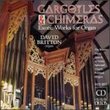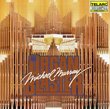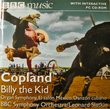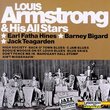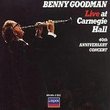| All Artists: Johann Sebastian Bach, Michael Murray, Methuen Memorial Music Hall Organ Title: The Great Organ at Methuen - Bach: BWV 540, 542, 582, 643, & 737 Members Wishing: 0 Total Copies: 0 Label: Telarc Release Date: 10/25/1990 Genre: Classical Styles: Chamber Music, Forms & Genres, Variations, Historical Periods, Baroque (c.1600-1750), Classical (c.1770-1830), Instruments, Keyboard Number of Discs: 1 SwapaCD Credits: 1 UPC: 089408004926 |
Search - Johann Sebastian Bach, Michael Murray, Methuen Memorial Music Hall Organ :: The Great Organ at Methuen - Bach: BWV 540, 542, 582, 643, & 737
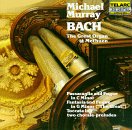 | Johann Sebastian Bach, Michael Murray, Methuen Memorial Music Hall Organ The Great Organ at Methuen - Bach: BWV 540, 542, 582, 643, & 737 Genre: Classical
|
Larger Image |
CD DetailsSimilarly Requested CDs
|
CD ReviewsOutstanding Passacaglia in C, and a real subwoofer tester Patrick A Daley | Fredericton, New Brunswick | 11/03/2000 (5 out of 5 stars) "The only real problem with this disc is that it is too short! This is a very early Telarc, and unfortunately, the CDs were not made very long in those days, only 39:59 on my player. Don't be misled by the June 1979 recording date, the Soundstream digital recorder and those Schoeps Colette Series microphones could do the job. The recording is really magnificent, about as close to 'like there' as one is likely to find with stereo, with a wide stereo image with realistic depth. The organ at the Methuen Memorial Music Hall in Methuen, Massachusetts is quite an instrument, capable of classic and romantic colorations and textures, according to the liner notes. Not being an expert on organs, one thing I do notice is the 32 foot Principal in the Pedals, with the low 16 Hz fundamental tones.The famous Fantasia and Fugue in G minor, BWV 542, which begins the CD, is outstanding. One can hear immediately the outstanding presence of the recording and the immense power of the performances. One simply forgets about analysis and listens.Thank God there is not another Toccata and Fugue in d minor here! Sure, it's a magnificent piece, but Heaven knows that has been recorded enough. Does it have to be on virtually every CD single of Bach organ music? Murray plays the Toccata in F Major, BWV 540, with great conviction, and the sound is magnificent. One wishes they had included the fugue that generally goes with it, but I did warn you this is an early CD, and they didn't make them very long then. Telarc really should reissue these performances on a CD with more items.I found this to be a great CD for auditioning subwoofers. Do you want to see if a subwoofer goes deep? Go to Band 3, 29 seconds in, and there is the first of a series of sustained 32 foot pedal tones (16 Hz fudamental), good and strong, of the Passacaglia in C, BWV 582. If you don't get that 'air shaking all around you' effect, the subwoofer isn't adequate for it! Most speakers and even subwoofers simply cannot play the bottom note at all. Not to get caught up in the technical merits of the recordings, Michael Murray's performance of the great Passacaglia in C is awe inspiring. Bach's Passacaglia may be the greatest piece of music ever written, and it is hard not to believe it when listening to this magificent performance. The Passacaglia is a strong, driving work, working out the variations on the theme with an inexorable logic. There is absolutely nothing like it, and this is the ideal performance.The other two bands on the disc are much shorter pieces, "Vater unser im Himmelreich," BWV 737 and "All Menschen muessen sterben," BWV 643, which are just under 2.minutes each. They are meditative pieces, much quieter, though there is some nice deep pedal work. Surely Telarc could put some other works with these, to get the time to over 70 minutes.I was tempted to downgrade this because it is rather short by today's standards, and the material should be reissued in a collection with other pieces. However, with performances and recordings like this, and what surely must be the best Passacaglia in C, it is really worth whatever you would pay for it. This is a CD for a lifetime of listening." Magnificent David A. Kemp | Plano, TX USA | 10/30/2003 (5 out of 5 stars) "Let's state up front what some may regard as drawbacks of this CD: first, it's only 40 minutes long; second, it's an early digital recording (1979), and I believe is the earliest in the distinguished series of Michael Murray organ CDs on Telarc.Now for its advantages, which to me are substantial enough to overcome any drawbacks. First, the organ: I'm an organ buff, and in my opinion this is one of the greatest organs in the USA. It has an unusual history. Built by the Bavarian firm of Walcker in 1857-63 for the Boston Music Hall, it was the first concert organ in the country. In 1884 it was dismantled to give stage space for the new Boston Symphony Orchestra. In 1897 it was purchased by a wealthy gent who commissioned a lavish new music hall in Methuen Mass. for it, where it was installed and rededicated in 1909. It must be one of the very few organs in the world that enjoys its own music hall built especially to house it. It was revised and rebuilt by the famous G. Donald Harrison of Aeolian-Skinner in 1947. Today it has four manuals, 84 stops, 115 ranks, and 6,027 pipes (including two 32-foot pedal pipes).The description of the tonal qualities of this organ in the CD notes (uncredited, but I suspect by the highly literate Murray, who has often written his own notes, as well as books on his teacher Dupre, Schweitzer, and French masters of the organ) is so apt, so right-on-target, that I'd like to quote it: "Neither wholly romantic nor wholly classic, the Methuen organ partakes of both styles of instrument and is suited to both styles of music. Its beauties include a unique mellowness that comes only to well-built flue pipes and only after decades of seasoning, and a miraculous blending of eight-foot foundations, whose harmonics interweave like the colors of a tapestry. The tutti is overwhelming, not abrasive. The mixtures are bright, not shrill. The foundations are full-bodied but remain, in even the most complex polyphony, clear. Accordingly, the Methuen organ is renowned as one of the world's artistic treasures." Amen. It is indeed a rare beauty.Michael Murray is one of the pre-eminent organists of our day and a superb interpreter of Bach. He is a sound musician; his playing is never flashy or trendy or eccentric; and he never tries to show off: although he is an accomplished technician, his technique is there to serve the music, not the other way around (as one critic wrote, "He is definitely for us, we who listen to music first and organ fingerwork second"). I have long found him to be one of the most deeply satisfying Bach organists on record. This CD contains three major Bach works (in addition to two short pieces) in performances as compelling as any you will find. His tempos and his registrations are beyond reproach; they have just the right amount of gravitas, avoiding ponderousness on the one hand and lightness on the other. (He does tend to favor slower tempos, so those who like their Bach to move swiftly may be less satisfied than I am.) And the 1979 digital engineering turns out to be first class. In short, here we have it all: a master organist playing major Bach on a magnificent, tonally resplendent instrument recorded in exemplary sound: vivid, rich, and full, with excellent clarity and deep, natural bass. If you relish Bach, organ music, or organs, you are sure to enjoy this CD." Short and has been reissued with 2 Franck pieces DKDC | Washington, DC USA | 01/03/2005 (4 out of 5 stars) "Telarc CD 80637 adds Cesar Franck pieces "Fantasie in A" and "Pastorale, Op 19" making the total time of the reissue 61:39. 2004"
|

 Track Listings (5) - Disc #1
Track Listings (5) - Disc #1